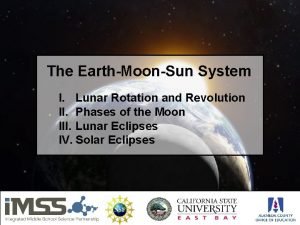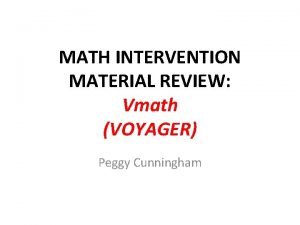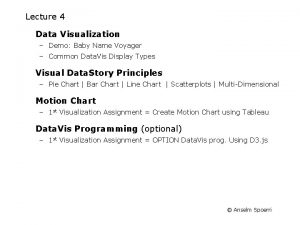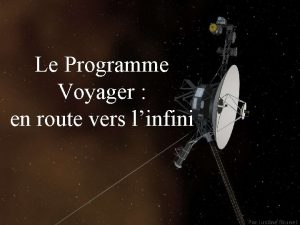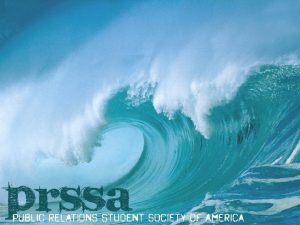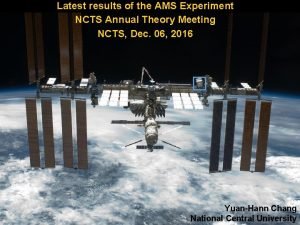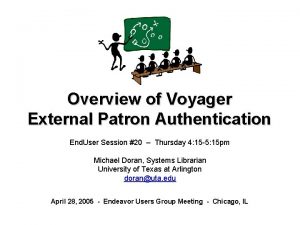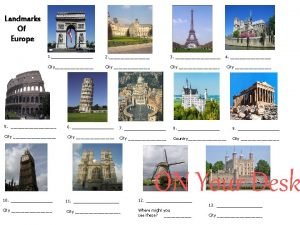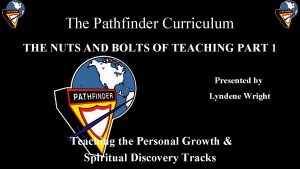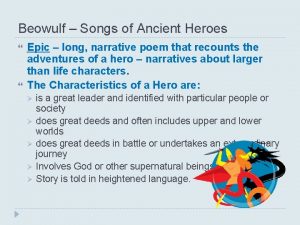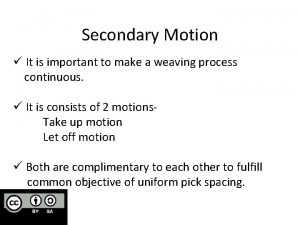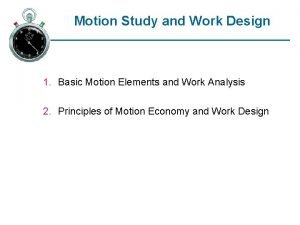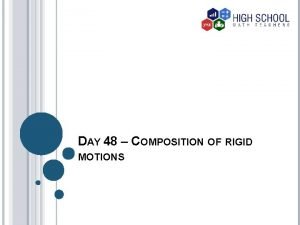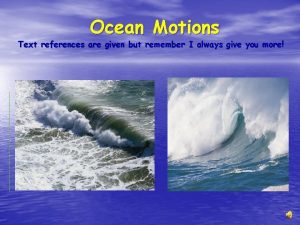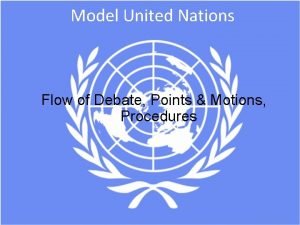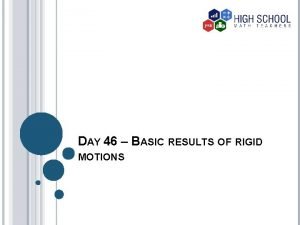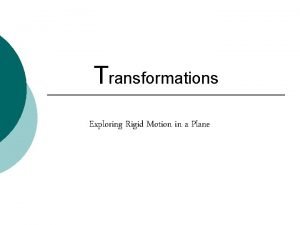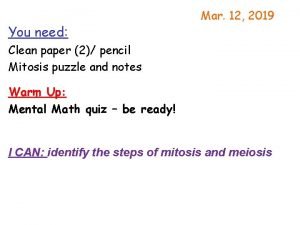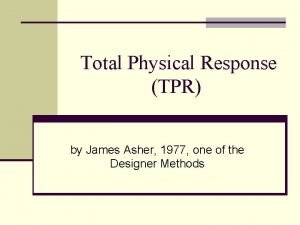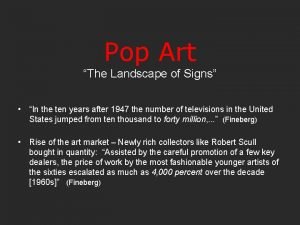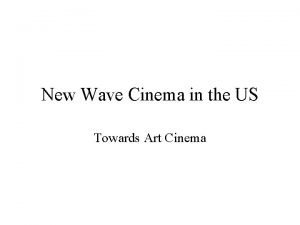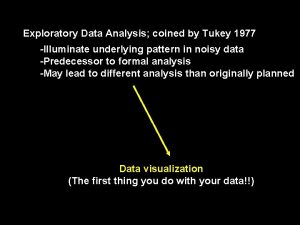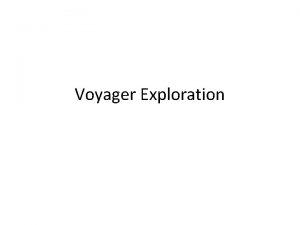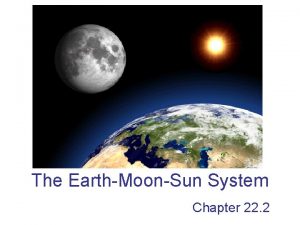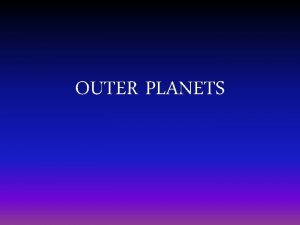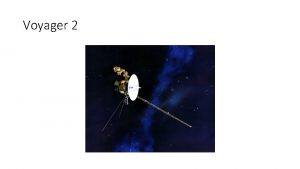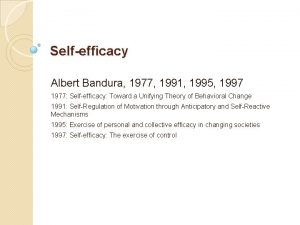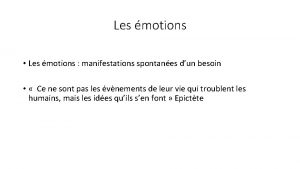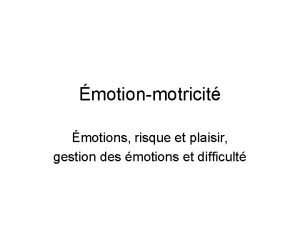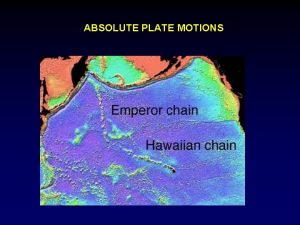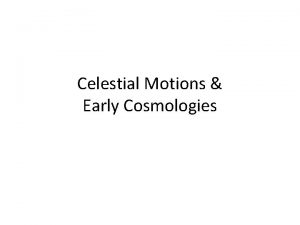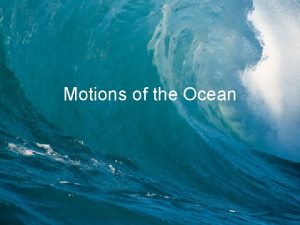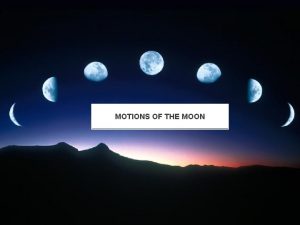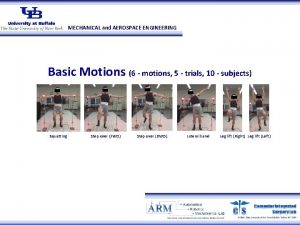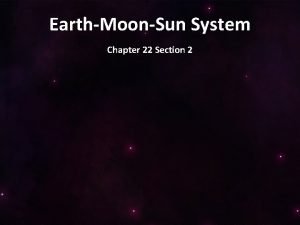The EarthMoonSun System 1977 Voyager 1 Motions of




































- Slides: 36

The Earth-Moon-Sun System 1977, Voyager 1

Motions of the Earth • Revolution • Rotation n Rotatio • Precession n Revolutio

Motions of the Earth: Precession The slow (26, 000 year cycle) change in the direction in which the Earth’s axis points.

Motions of Earth: Rotation • Day and night cycle • MEAN SOLAR DAY—Noon to noon, 24 hours • SIDEREAL DAY—Time for Earth to complete one rotation with respect to a star not our sun, sun— 23 hours, 56 minutes, 4 seconds

Why do we use the mean solar day instead of the sidereal day? Consider this: In sidereal time, “noon” occurs 4 minutes earlier every day. After 6 months, “noon” would occur at “midnight”. So who uses sidereal time? Astronomers because the STARS appear at the same position in the sky every 24 sidereal hours.

• In 1851, French physicist Léon Foucault first showed that Earth’s rotation can be easily viewed by observing the motion of a tall pendulum. • Over 24 hours, the plane of the pendulum (green) rotates through 360 degrees which means it can also be used as a clock! https: //en. wikipedia. org/wiki/Foucault_pendulum Earth’s Rotation

So how fast DOES the Earth rotate? At the equator, our rotational speed is 1, 674 kph or 1, 040 mph, less at higher latitudes. At Hobbs, that’s 1405 kph or 875 mph!

Motions of the Earth: Revolution is the motion of a body, such as a planet or moon, along a path around some point in space. • Earth travels in its elliptical orbit with an average speed of 107, 000 kph (66, 000 mph) • Closest approach to the sun is perihelion about January 3 rd (147 million km) • Farthest distance is aphelion about July 4 th (152 million km)

Seasons, Perihelion and Aphelion • At perihelion, the Northern Hemisphere of Earth is pointed away from the sun (winter). • At aphelion, it is pointed toward the sun (summer).

Ecliptic and Celestial Sphere • The apparent path of the sun across the daytime sky and against the backdrop of the stars at night is called the ecliptic. • The celestial sphere is an imaginary sphere with the Earth at its center. All objects in the observer's sky can be thought of as being projected upon the inside surface of the celestial sphere.

Plane of the Ecliptic • Generally, the planets and the moon travel in nearly the same plane as Earth, so their paths on the celestial sphere lie near the ecliptic.


Earth-Sun Motion • The sun revolves around the Milky Way Galaxy, taking 225 million years to complete one orbit, at speeds near 225 km/s (800, 000 kph = 500, 000 mph) • The solar system also speeds in the direction of the star Vega (20 km/s = 72, 000 kph = 45, 000 mph) within its local cluster of galaxies

Earth-Sun-Milky Way Galaxy Motions • Our galaxy is traveling at about 2. 1 million kph (1. 3 million mph) through the universe • The Milky Way Galaxy is presently approaching one of its nearest galactic neighbors, the Great Galaxy in Andromeda.


So how fast are you going? Assuming all of these various motions line up in the same direction (which is unlikely), the fastest you could be moving RIGHT NOW is 1, 405 kph (Earth’s rotation) + 107, 000 kph (Earth’s revolution about the sun) + 800, 000 kph (Solar System’s revolution in the Milky Way Galaxy) + 72, 000 kph (Solar System toward Vega) + 2. 1 million kph (Milky Way Galaxy’s motion through the universe) = 3, 080, 675 kph or about 1, 850, 000 mph

Earth-Moon System • Perigee is the point in the moon’s orbit at which it is closest to Earth. • Apogee is the point at which the moon is farthest from Earth. • The moon appears larger to us at perigee because it really is closer! • The Moon's orbit around Earth is tilted 5 degrees to Earth's orbit around the Sun (the ecliptic)

Lunar Cycle • The phases of the moon are the progression of changes in the moon’s appearance during the month. • Lunar phases are a result of (1) the motion of the moon, and (2) the sunlight that is reflected from its surface. VIEW Brain. POP Moon Phases

Phases of the Moon

Earth-Moon System Motions Because the Earth-Moon system is orbiting the Sun, there is a difference between the month (one cycle) as measured by the moon’s phases and with respect to other stars. • The synodic month is based on the cycle of the moon’s phases. It lasts 29 -1/2 days and is the time it takes for the moon to return to the same position between the Earth and the sun. • The sidereal month is the true period of the moon’s revolution around Earth. It lasts 27 -1/3 days. With respect to a distant star, it is the time it takes for the moon to orbit Earth and return to the same position.

• The moon’s period of rotation about its axis and its revolution around Earth are the same, 27 -1/3 days. • Therefore the moon keeps the same face toward the Earth at all times. This is caused by the gravitational attraction between them. We say that the moon is ‘phase-locked’.

Eclipses • Solar eclipses occur when the moon moves directly between Earth and the sun, casting a shadow on Earth. • Lunar eclipses occur when the moon passes through Earth’s shadow. • During a new-moon or fullmoon phase, the moon’s orbit must cross the plane of the ecliptic for an eclipse to take place (remember the moon’s orbit is tilted 5 degrees from the ecliptic). • At most, there are 4 solar and 3 lunar eclipses per year.

Solar Eclipse A solar eclipse can only be seen by people directly underneath the shadow. People in the penumbra see a partial solar eclipse. People in the umbra see a total solar eclipse. The moon’s shadow has two parts: • The inner (darker) shadow is called the umbra (about 160 km or 100 mi across) • The outer shadow is called the penumbra • The shadow moves at 1600 kph (or 1000 mph) in a path about 16, 000 km (or 10, 000 miles) long

Solar Eclipse An annular eclipse (inset picture) happens when the Moon is farthest from us, and the tip of the umbra doesn't quite reach the Earth. From our point of view here on the Earth, the moon does not quite cover the Sun, so a ring of sunlight will surround it.

Moon’s umbral shadow on Earth, August 11, 1999, from the Mir Space sta.

Three Types of Eclipses

Lunar Eclipse

Lunar Eclipse

View • Brain. POP: Eclipse • Total Solar Eclipse 1999 (5: 38) • Lunar_eclipse_animation (1: 28) [excellent explanation of scattering, bloodred] • Lunar eclipse 2011 (2: 04)


Oceanic Tides • The Moon’s gravitational pull on Earth’s oceans causes the twice daily high and low tides. • Earth’s gravity keeps our oceans rotating along with it. • A tidal bulge occurs closest to the Moon due to the increased ‘tug’ of the • Because the Moon is Moon’s gravity on the water on that much closer to Earth side. than the Sun is, its • On the opposite side of Earth the gravitational pull on our oceans also form a bulge because the oceans is felt more effect of inertia there is greater than the strongly than the Sun’s. Moon’s gravity -- the rotating ocean there tries to keep going in a straight Watch Brain. POP: Tides line so it ‘bulges’ out there, too. Ref. http: //oceanservice. noaa. gov/education/kits/tides 03_gravity. html

Spring and Neap Tides • Where the Moon is in its cycle influences how high or low the tides are. • Spring tides occur when the Moon lines up with the sun (at new or full moon phase), adding the sun’s pull to the Moon’s. • Neap tides occur when the Moon is at 1 st or 3 rd quarter phase so that its pull is perpendicular to the sun’s.

Earth’s Moon: the Lunar Surface • A crater is the depression at the summit of a volcano or a depression produced by a meteorite impact. • Most craters were produced by the impact of rapidly moving debris. • Rays are any of a system of bright, elongated streaks, sometimes associated with a crater on the moon.

Earth’s Moon: Lunar Surface Ø Highlands § Most of the lunar surface is made up of densely pitted, light-colored areas known as highlands. Ø Maria or mares (‘Mare’ is the Latin word for ‘sea’) § Mares are large, dark, basaltic plains formed by ancient volcanic lava flows that covered large areas. § A rille is a long channel associated with lunar maria. A rille looks like a valley or a trench. Ø Regolith § The lunar regolith is a thin, gray layer on the surface of the moon, consisting of loosely compacted, fragmented material believed to have been formed by repeated impacts of meteorites.

Lunar Topographic Features

Mare Imbrium Sea of Rains) Kepler Crater Copernicus Crater Mare Tranquillitatus (Sea of Tranquility)
 Earthmoonsun
Earthmoonsun Vmath voyager
Vmath voyager Baby name voyager
Baby name voyager Sonde voyager : en route vers l'infini
Sonde voyager : en route vers l'infini Koha vs evergreen
Koha vs evergreen Voyager plant optimization
Voyager plant optimization Uh manoa voyager
Uh manoa voyager The voyager
The voyager Voyager pad
Voyager pad Xarelto voyager pad
Xarelto voyager pad Conjugate voyager
Conjugate voyager Voyager authentication
Voyager authentication Yti voyager
Yti voyager High risk voyager zones a b c d
High risk voyager zones a b c d Pathfinder curriculum
Pathfinder curriculum Nedbank american express credit card travel insurance
Nedbank american express credit card travel insurance _
_ Primary motions of weaving
Primary motions of weaving Motion economy
Motion economy Composition of transformations: rigid motions
Composition of transformations: rigid motions Song leading hand motions
Song leading hand motions Ocean motions
Ocean motions Motions model un
Motions model un Basic rigid motions
Basic rigid motions Size separation can be performed by using
Size separation can be performed by using Identify the transformation
Identify the transformation True motions
True motions Bioweb mtn
Bioweb mtn Mimigarciah
Mimigarciah James asher tpr
James asher tpr Bandura 1977
Bandura 1977 Pop art landscape
Pop art landscape Hollywood 1977
Hollywood 1977 Hardware
Hardware Tukey 1977
Tukey 1977 Baddeley and hitch 1977
Baddeley and hitch 1977 Edip öncü
Edip öncü
